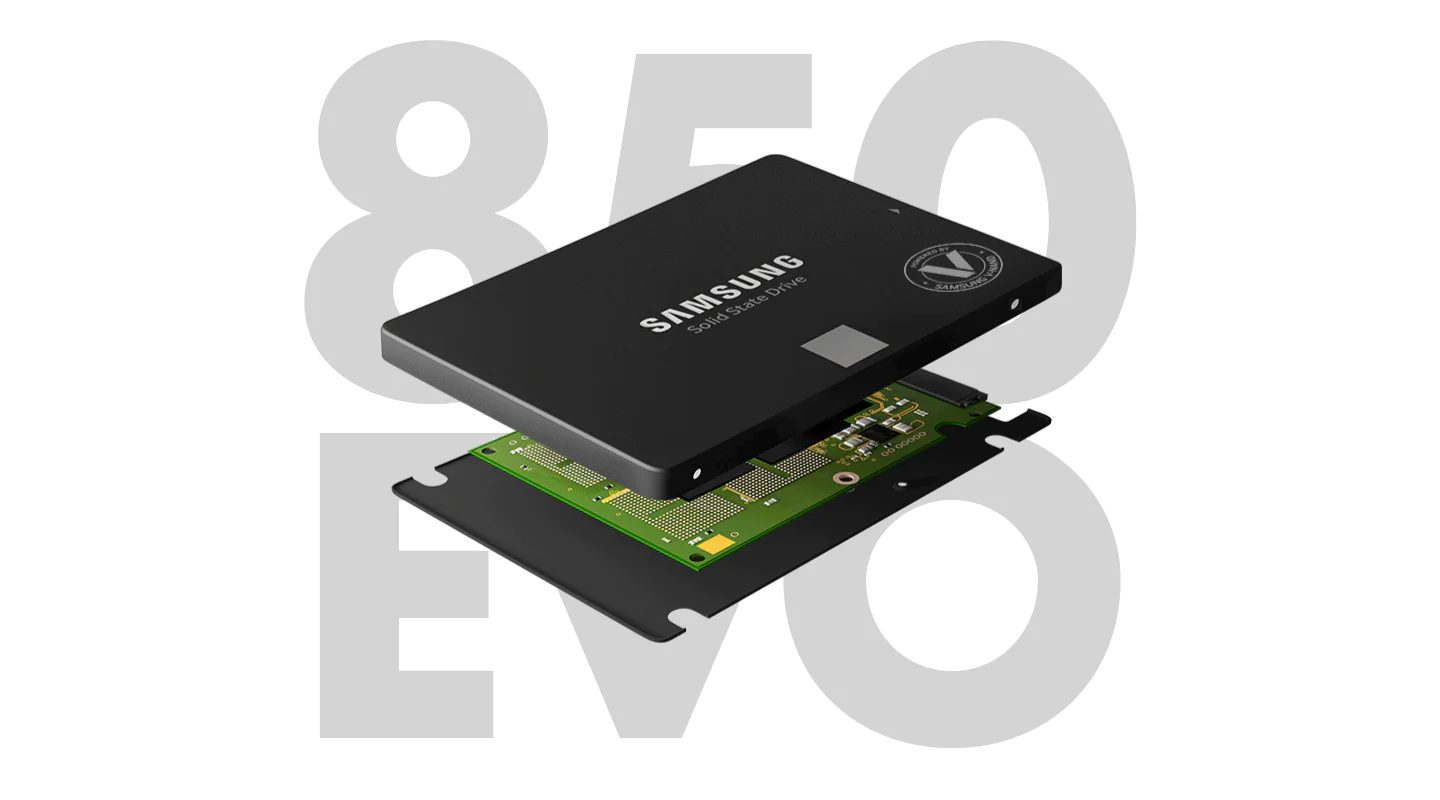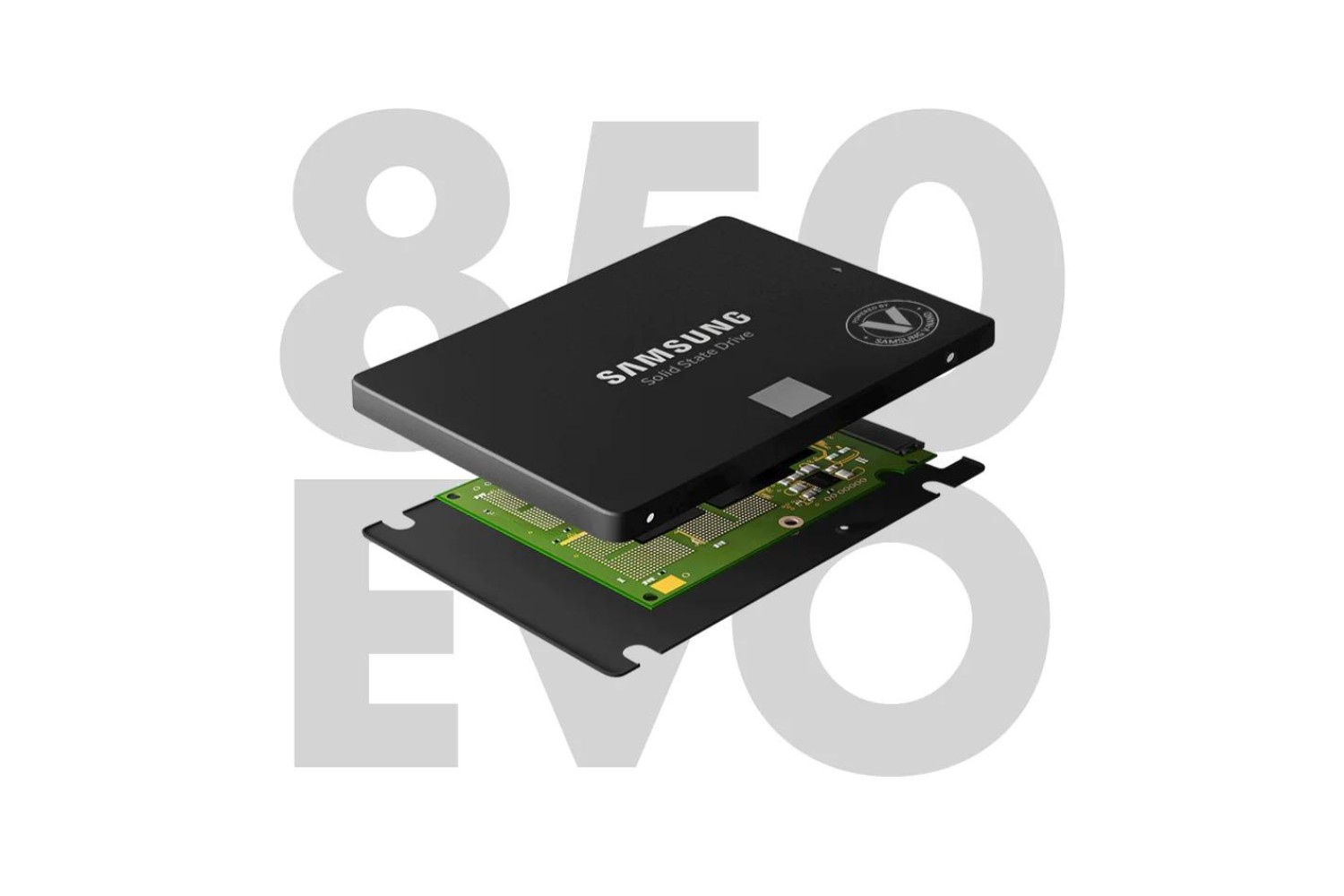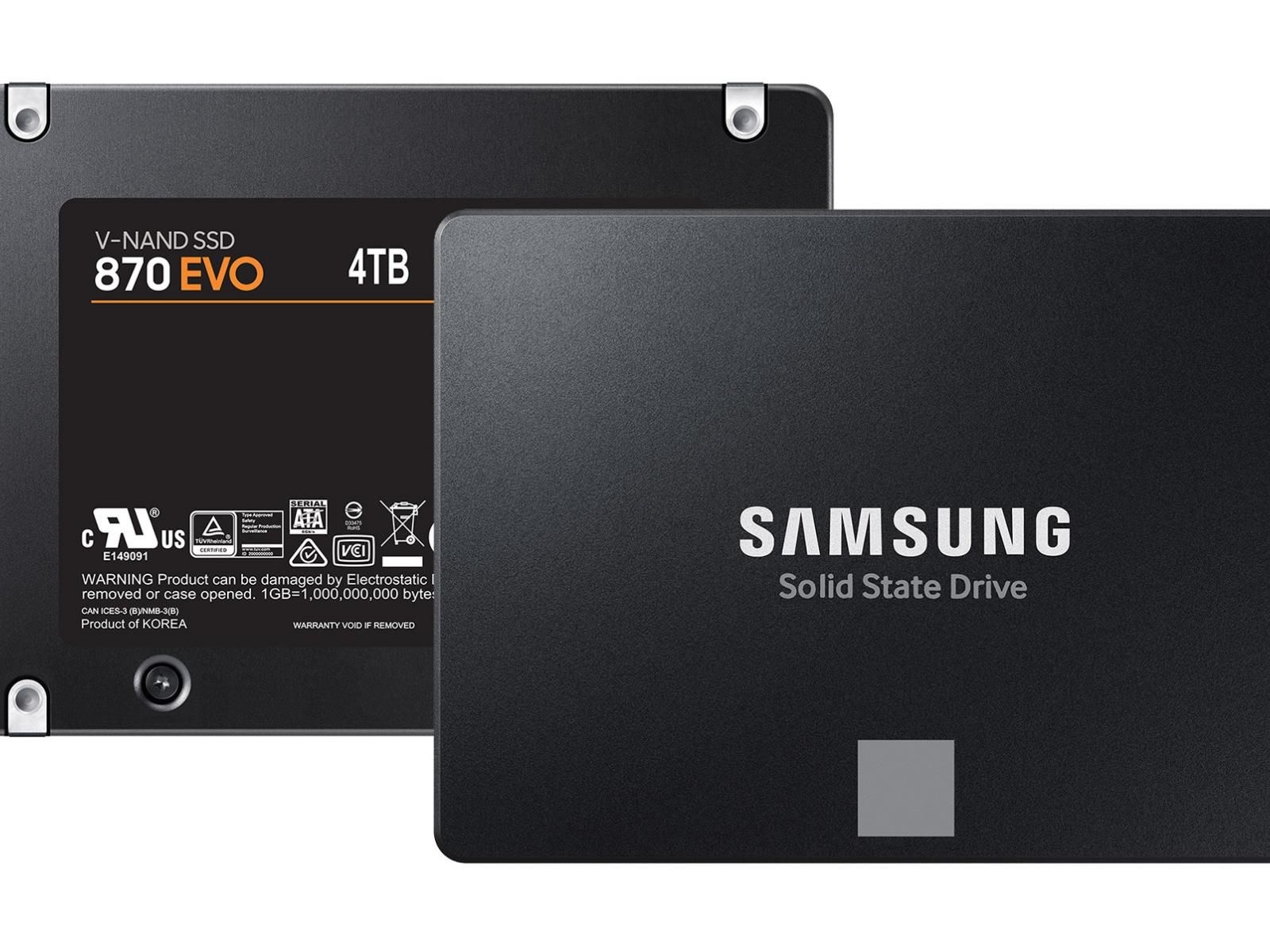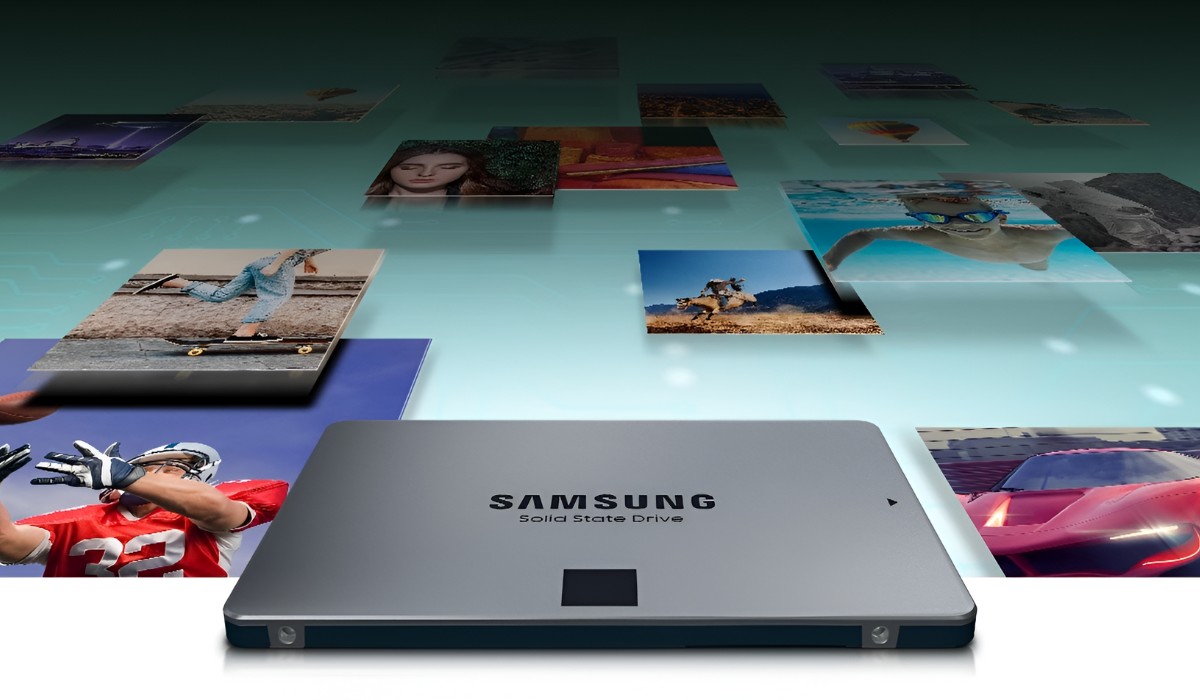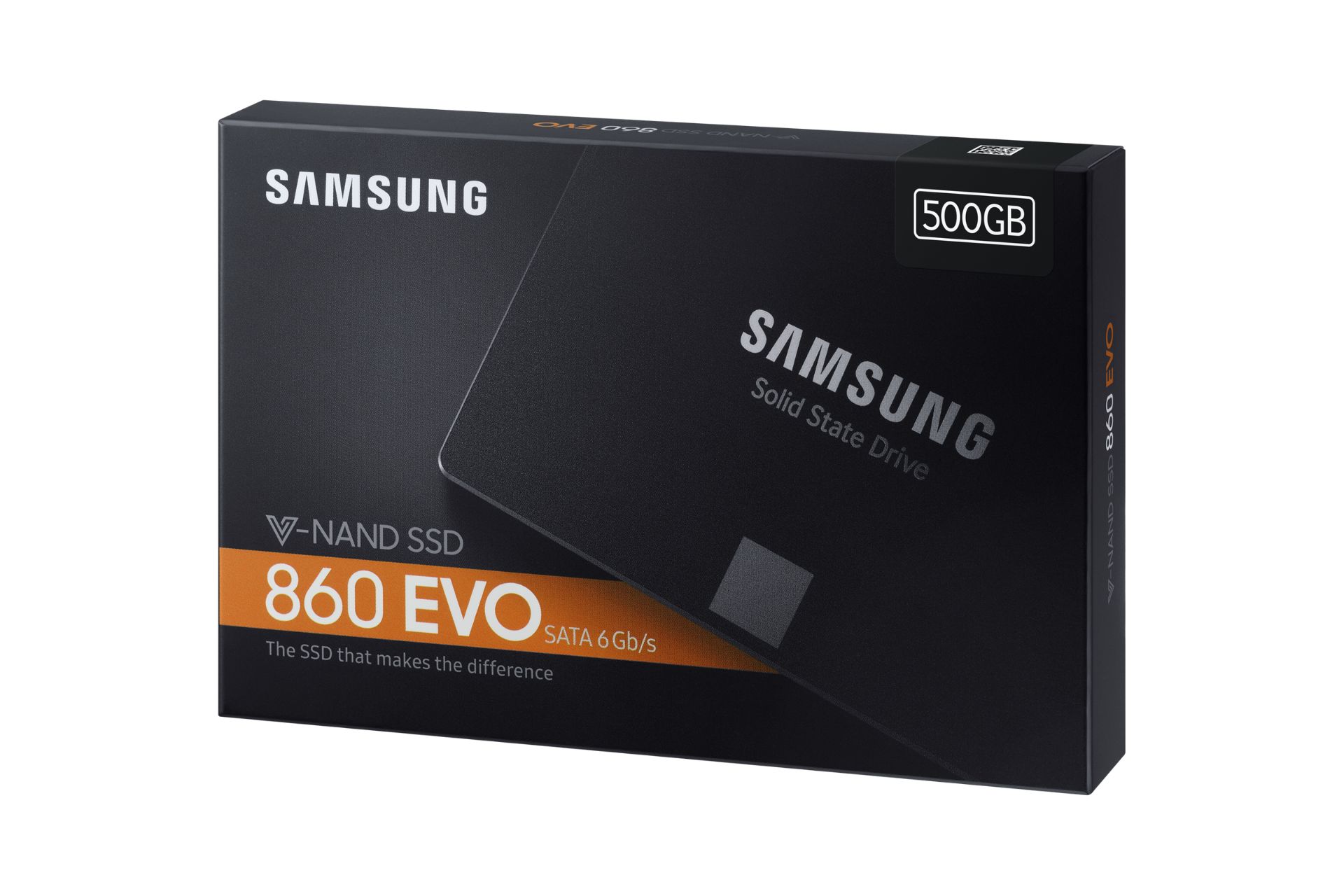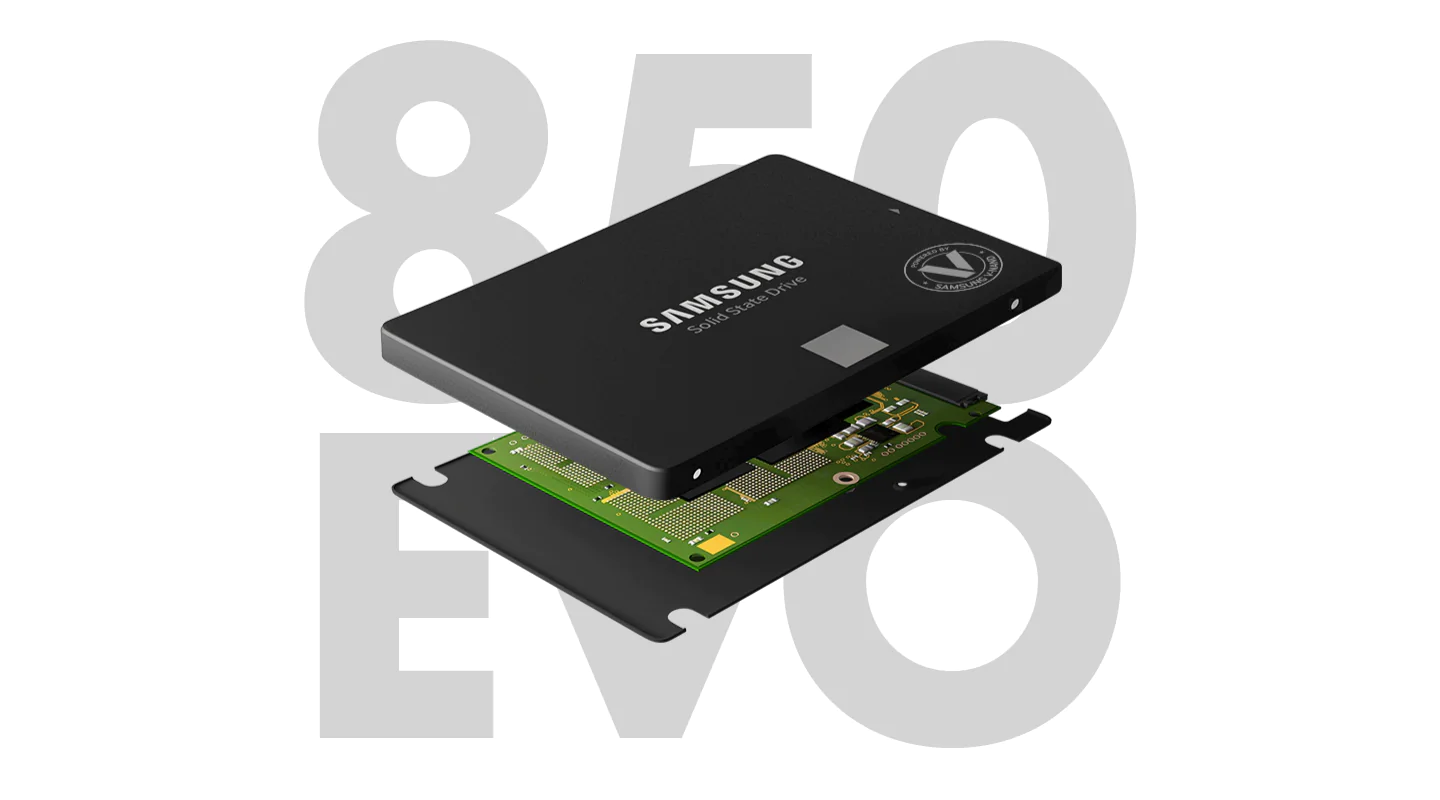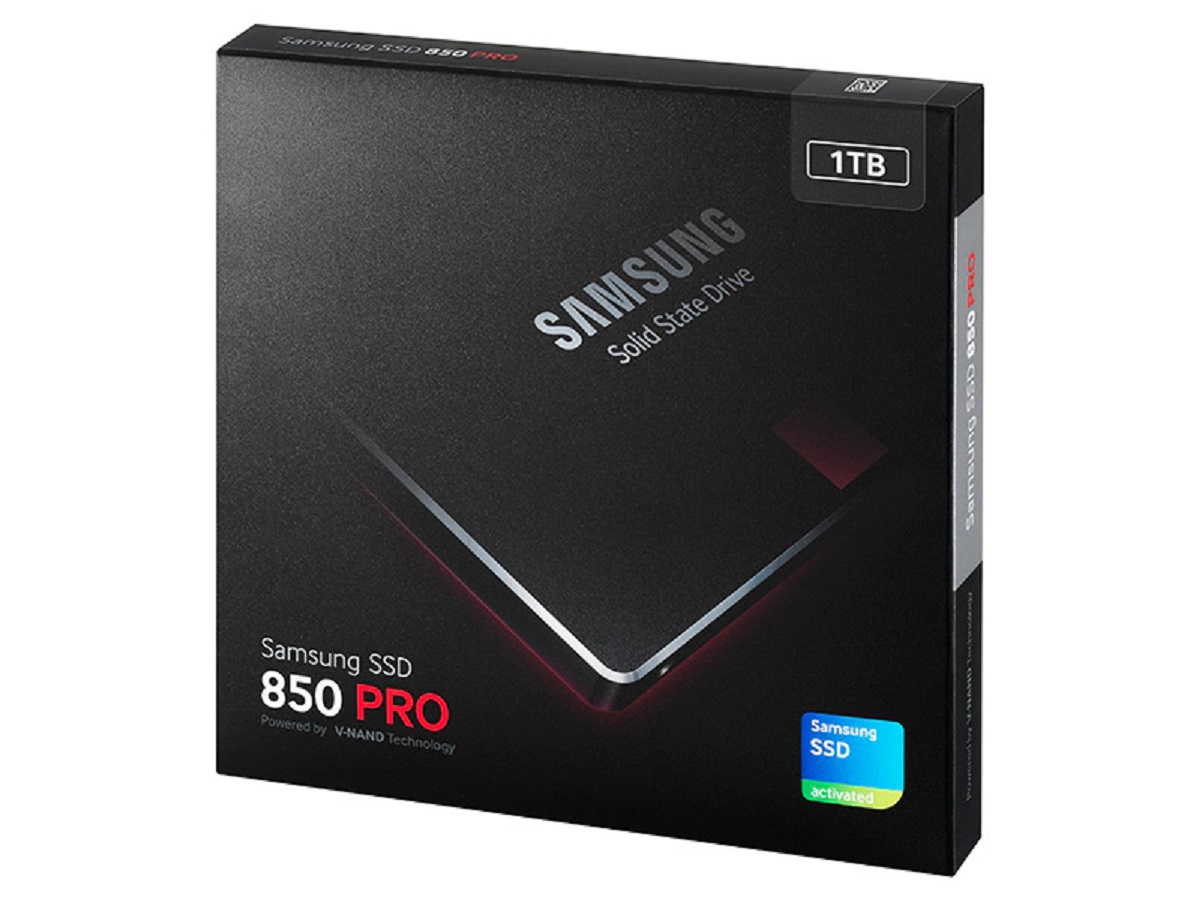What is Samsung SSD 850 Evo
The Samsung SSD 850 Evo is a solid-state drive (SSD) that offers high-performance storage solutions for various computing needs. With its advanced technology and reliable performance, it has become a popular choice among users looking to upgrade their computer’s storage capabilities.
The 850 Evo features Samsung’s cutting-edge V-NAND technology, which stacks memory cells vertically to increase the capacity and speed of the drive. This allows for faster read and write speeds, resulting in improved overall system performance. It also uses Samsung’s TurboWrite technology, which accelerates write speeds and enhances endurance.
One of the standout features of the Samsung SSD 850 Evo is its durability and reliability. It has a MTBF (Mean Time Between Failures) of 1.5 million hours, meaning it can reliably handle heavy workloads without compromising its performance or lifespan. This makes it an ideal choice for both casual users and professionals who require consistent and dependable storage.
The 850 Evo is available in various capacities, ranging from 250GB to 4TB, catering to the diverse storage needs of different users. It connects to the computer via a SATA III interface, ensuring compatibility with most modern systems. Additionally, it comes with a 5-year limited warranty, providing peace of mind to users regarding its longevity and performance.
Whether you are a gamer who needs faster load times, a content creator who deals with large files, or a business professional who requires fast data access, the Samsung SSD 850 Evo offers a reliable and efficient solution. Its combination of performance, durability, and capacity makes it a top choice among SSDs on the market.
As technology advances and storage demands increase, the Samsung SSD 850 Evo continues to be an excellent option for upgrading your computer’s storage capabilities. Its innovative features and reliable performance ensure that your data is safe, and your system operates at peak efficiency.
Things you will need for setup
Before you begin setting up your Samsung SSD 850 Evo, it’s important to gather all the necessary tools and components. Here are the things you will need to complete the setup process:
- Samsung SSD 850 Evo: This is, of course, the main component you will need. Make sure you have the SSD itself, along with any accompanying cables or brackets.
- Computer: You will need a desktop or laptop computer that has an available SATA III port. Check your computer’s specifications to ensure compatibility.
- SATA Data Cable: This cable is required to connect the SSD to your computer. Most SSDs come with a SATA data cable, but if not, you can purchase one separately.
- Power Cable: The SSD will also need to be powered, so make sure you have a compatible power cable available.
- Screwdriver: Depending on the type of computer case you have, you may need a screwdriver to secure the SSD in place. Check your computer’s manual or online resources to determine the type of screws required.
- Operating System Installation Media: If you are planning to perform a fresh installation of the operating system on your SSD, make sure you have the installation media readily available, such as a USB drive or DVD.
- Data Backup: It’s always a good idea to back up your important files and data before setting up a new SSD. This will ensure that you don’t lose any important information during the installation process.
Having all these tools and components ready before you start the setup process will make it easier and more efficient. Double-check that you have everything needed, and if something is missing, obtain it beforehand to avoid delays or interruptions during the setup process.
Step-by-step guide to connecting the SSD
Now that you have gathered all the necessary tools and components, it’s time to connect your Samsung SSD 850 Evo to your computer. Follow these steps to ensure a successful setup:
- Preparation: Before you begin, shut down your computer and disconnect the power cable. This will prevent any damage to the components during the installation process.
- Locate the SATA III ports: Open your computer case and locate the SATA III ports on the motherboard. These ports are usually labeled and can be found near the hard drive bays.
- Connect the SATA data cable: Take the SATA data cable and connect one end to the SATA III port on the motherboard. Connect the other end to the SSD itself. Ensure that the connections are secure, but be gentle to avoid any damage.
- Connect the power cable: Take the power cable and connect it to the SSD. The power cable should have a separate connector specifically for SSDs. Make sure it is firmly connected.
- Secure the SSD: If needed, use a screwdriver to secure the SSD in place. Depending on your computer case, you may need to attach screws or use brackets. Refer to your computer’s manual or online resources for specific instructions.
- Close the computer case: Once the SSD is connected and secured, close your computer case and fasten any screws or clips to ensure it is properly sealed.
With these steps completed, you have successfully connected your Samsung SSD 850 Evo to your computer. Now you can move on to configuring and formatting the SSD for first-time use. Be sure to follow the manufacturer’s instructions and consult the user manual for further guidance, if needed.
Formatting the SSD for first-time use
After connecting your Samsung SSD 850 Evo to your computer, the next step is to format it for first-time use. Formatting the SSD will prepare it for storing data and ensure optimal performance. Follow these steps to format your SSD:
- Access the Disk Management utility: On a Windows computer, press the Windows key + R, type “diskmgmt.msc” in the Run dialog box, and press Enter. This will open the Disk Management utility.
- Identify the SSD: In the Disk Management window, locate your SSD drive. It should be labeled as “Unallocated” or “Raw.”
- Initialize the SSD: Right-click on the SSD drive and select “Initialize Disk.” Choose the appropriate disk type (MBR or GPT) and click OK.
- Create a new partition: Right-click on the unallocated space of the SSD and select “New Simple Volume.” Follow the on-screen instructions to set the partition size, assign a drive letter, and select the file system (NTFS is recommended).
- Complete the formatting: Once the partition settings are configured, click Next and follow the prompts to complete the formatting process. This may take a few moments.
- Verify the formatting: After the formatting is complete, the SSD should now appear as a formatted drive with the assigned drive letter in the Disk Management utility.
It’s important to note that formatting the SSD will erase any existing data. Therefore, make sure you have backed up any important files before proceeding with the formatting process.
Once the formatting is complete, your Samsung SSD 850 Evo is ready to be used as a storage device. You can now install your operating system, transfer files, and enjoy the benefits of a fast and reliable SSD in your computer.
Installing Samsung Magician software
After formatting your Samsung SSD 850 Evo, installing the Samsung Magician software is highly recommended. This software provides a range of features to optimize and manage your SSD. Follow these steps to install Samsung Magician:
- Visit the Samsung website: Go to the official Samsung website and navigate to the support section. Search for “Samsung Magician software” or go directly to the product page for the SSD 850 Evo.
- Download the software: Locate the download link for Samsung Magician and click to download the latest version of the software compatible with your operating system.
- Run the installer: Once the download is complete, locate the installation file and double-click to run it. You may need to grant necessary permissions to initiate the installation process.
- Follow the installation wizard: The installation wizard will guide you through the setup process. Read and accept the terms and conditions, choose the destination folder for the software installation, and select any additional components you wish to install (if applicable).
- Complete the installation: After selecting the desired settings, click “Install” to begin the installation process. The software will now be installed on your computer.
- Launch Samsung Magician: Once the installation is complete, you can launch Samsung Magician either from the desktop shortcut or by searching for it in the Start menu.
- Configure and optimize: Upon launching Samsung Magician, you will have access to various features and settings to optimize your SSD’s performance. These include firmware updates, overprovisioning, rapid mode, and more. Take the time to explore the options and configure the settings according to your preferences.
Installing Samsung Magician provides you with valuable tools and resources to maximize the performance and lifespan of your Samsung SSD 850 Evo. It allows you to monitor drive health, check for firmware updates, and optimize system settings for an enhanced SSD experience.
By utilizing the features offered by Samsung Magician, you can ensure that your SSD is running at its best and enjoy the full benefits of its advanced technology.
Understanding and configuring Samsung Rapid Mode
Samsung Rapid Mode is an exclusive feature offered by Samsung SSDs, including the Samsung SSD 850 Evo. It is designed to boost the performance of your SSD by utilizing available system memory (RAM) as a cache.
By enabling Rapid Mode, you can accelerate your SSD’s read and write speeds, resulting in faster data access and improved overall system performance. However, it’s essential to understand how Rapid Mode works and configure it correctly. Here’s what you need to know:
Understanding Rapid Mode:
Rapid Mode leverages unused system memory and allocates it as a high-speed cache for the SSD. This cache acts as a buffer, storing frequently accessed data and reducing the need to fetch information from the SSD itself. As a result, it can significantly enhance the SSD’s performance, especially for tasks that involve intensive read and write operations, such as gaming or media editing.
Configuring Rapid Mode:
Follow these steps to configure Rapid Mode on your Samsung SSD 850 Evo:
- Launch Samsung Magician: Open Samsung Magician software on your computer.
- Select your SSD: Ensure that your SSD is detected and selected within the Samsung Magician interface.
- Enable Rapid Mode: In the Samsung Magician dashboard, locate the Rapid Mode option and toggle it on to enable the feature.
- Choose cache size: Depending on your system’s available memory, you can select the desired cache size for Rapid Mode. Keep in mind that allocating too much memory may affect system stability and other applications.
- Apply the changes: Once you have configured the Rapid Mode settings, click on the Apply or Save button to apply the changes.
Monitor and manage Rapid Mode:
After enabling Rapid Mode, it’s important to monitor its impact on your system’s performance regularly. Check the Samsung Magician dashboard for information on cache utilization, read/write speeds, and overall SSD performance. If you encounter any issues or notice system instability, consider adjusting the cache size or disabling Rapid Mode temporarily.
It’s worth noting that Rapid Mode is most beneficial for systems with ample system memory and handling resource-intensive tasks. While it can significantly boost SSD performance, its impact may vary depending on the specific usage scenarios and configurations.
By understanding how Samsung Rapid Mode works and configuring it effectively, you can harness the full potential of your Samsung SSD 850 Evo and optimize your system’s performance for demanding tasks.
Tips for optimizing the SSD performance
To ensure that your Samsung SSD 850 Evo operates at its best and delivers optimal performance, consider implementing the following tips:
- Enable TRIM: TRIM is a feature that helps maintain the SSD’s performance over time. Make sure that TRIM is enabled on your operating system to allow for efficient garbage collection and wear leveling.
- Update firmware: Regularly check for firmware updates from Samsung and install them as they become available. Firmware updates often bring performance improvements and bug fixes that can enhance the functionality of your SSD.
- Monitor drive health: Use Samsung Magician or other SSD monitoring tools to keep an eye on the health and condition of your drive. Monitoring can help identify potential issues early on and take appropriate actions to ensure the longevity of your SSD.
- Optimize operating system: Configure your operating system to work optimally with the SSD. This includes disabling disk defragmentation, disabling unnecessary indexing, and enabling AHCI mode in the BIOS settings (if applicable).
- Allocate overprovisioning: Overprovisioning is a technique where you reserve a portion of the SSD’s capacity for maintenance and wear leveling. Allocating some space for overprovisioning can improve the SSD’s performance and longevity. This can be done through Samsung Magician or other SSD management tools.
- Regularly update drivers: Keep your drivers, including motherboard and storage controller drivers, up to date. Updated drivers often bring compatibility improvements and performance optimizations for your SSD.
- Avoid extreme temperature: Keep your SSD in a well-ventilated area and avoid exposing it to extreme temperatures. SSDs perform best within a specific temperature range, so ensuring proper cooling can help maintain optimal performance.
- Manage unnecessary background processes: Identify and disable unnecessary background processes that may consume system resources and affect SSD performance. This can be done through the Task Manager or using third-party software.
- Regularly clean up junk files: Perform regular disk cleanup to remove unnecessary files and free up space on your SSD. This can help maintain its performance and prevent it from becoming cluttered with unused data.
By implementing these tips, you can optimize the performance of your Samsung SSD 850 Evo and ensure that it operates efficiently over its lifespan. Maximize its potential by keeping it updated, monitoring its health, and following best practices for SSD maintenance.
Troubleshooting common issues
While the Samsung SSD 850 Evo is a reliable and high-performing storage solution, you may encounter occasional issues. Here are some common problems that users may face and possible solutions:
- SSD not detected: If your SSD is not being detected by your computer, ensure that the cables are securely connected. Try using a different SATA cable or port on the motherboard. Also, check if the SSD is properly powered. If the issue persists, it could be a compatibility issue or a faulty SSD requiring professional assistance.
- Slow performance: If you notice a decrease in performance, check if the SSD is almost full. SSDs can slow down when they reach capacity. Consider freeing up space by deleting unnecessary files or moving them to another storage device. Also, ensure that the firmware is up to date and that the SSD is not overheating. Regularly cleaning up junk files and optimizing the operating system can also help improve performance.
- Unexpected restarts or freezes: If your computer is experiencing random restarts or freezes, it could be related to the SSD. Verify that the SSD is properly installed and connected. Update the firmware to the latest version as it may address stability issues. Additionally, ensure that the computer’s power supply is adequate to support the system components.
- Data corruption or loss: If you encounter data corruption or loss, it could be due to various factors such as power surges, firmware issues, or improper usage. It is crucial to regularly back up your data to avoid long-term consequences. Consider using reliable backup solutions or cloud storage services to protect your valuable information.
- Compatibility issues: Some SSDs may have compatibility issues with certain systems or operating systems. Before purchasing an SSD, check the manufacturer’s website for compatibility information and ensure that your system meets the requirements. If you encounter compatibility issues, contact the SSD manufacturer or consult with a professional for further assistance.
Should you encounter any of these issues or experience other difficulties with your Samsung SSD 850 Evo, it is always recommended to consult the official Samsung support resources or reach out to their customer support for further guidance and assistance. They will be able to provide you with specific troubleshooting steps or arrange for repair or replacement if necessary.
Remember to exercise caution and perform any troubleshooting steps carefully to avoid any accidental damage to the SSD or other components of your computer system.
Conclusion
The Samsung SSD 850 Evo is a high-performance storage solution that offers speed, reliability, and durability for various computing needs. With its innovative features such as V-NAND technology and TurboWrite, it delivers faster read and write speeds, enhancing overall system performance.
In this guide, we learned about the Samsung SSD 850 Evo and explored the steps for its setup, including connecting the SSD to your computer, formatting it for first-time use, and installing the Samsung Magician software for optimal performance and management of the SSD.
We also discussed tips for optimizing the SSD performance, including enabling TRIM, updating firmware, monitoring drive health, and managing system resources. These tips ensure that your SSD operates at its best and delivers a consistent performance over time.
In the event of common issues, such as the SSD not being detected, experiencing slow performance, unexpected restarts or freezes, or data corruption, we provided troubleshooting steps to assist in resolving these problems. Remember, if issues persist, it is always beneficial to consult official support resources or reach out to the manufacturer for assistance.
By following the guidelines presented in this guide, you can maximize the performance and longevity of your Samsung SSD 850 Evo, ensuring a reliable and efficient storage solution for all your computing needs.
Upgrade your storage capabilities today and experience the outstanding performance of the Samsung SSD 850 Evo!







